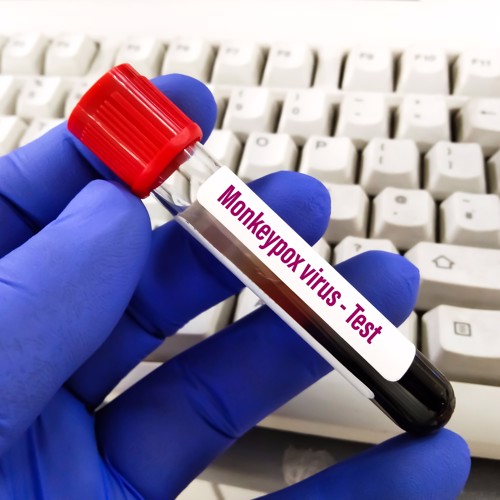Monkeypox - a sense of Déjà vu?
NO
PHARMACEUTICAL INFLUENCE
Monkeypox - a sense of Déjà vu?

Monkeypox – a sense of Déjà vu?
“Oh no, not again”. You could be forgiven for thinking that as depressingly familiar stories emerge of a virus spreading more widely than usual. That’s not helped by the fact that many of those stories refer to periods of isolation, PPE and decontamination of clinical rooms. What is monkeypox, how does it present, what should we do if we suspect it, and should we be worried about where this is all heading?
Background
Monkeypox was first described in 1958 in colonies of monkeys kept for research. The virus belongs to the orthopoxvirus genus that also includes smallpox and cowpox. The first case was reported in a human in the Democratic Republic of Congo in 1970. Since then, infections have generally occurred in central and western Africa with occasional cases in other parts of the world linked to international travel or imported animals. Although the initial case in the UK was in a patient with recent travel to Nigeria, later cases have not travelled to countries where monkeypox is endemic. The disease is spread by close contact (particularly face-to-face) and body fluids, so is linked to sexual contact. A notable proportion of infections in this current outbreak are amongst people who are gay, bisexual and men who have sex with men. Anyone can catch monkeypox however and not all infections are sexually transmitted - the virus can also be spread through contact with clothing or linens used by an infected person.
How does it present?
Symptoms usually arise 5-21 days after exposure and include fever, headache, muscle aches, backache, lymphadenopathy and fatigue. The rash normally appears 1-3 days after the onset of fever, usually starting on the face before becoming more widespread. Given the link to sexual contact, the UK Health Security Agency (UKSHA) is warning people to be especially suspicious of genital rashes. The rash can look like chicken pox or syphilis and goes through several stages, including vesicles, pustules and scabs, which then drop off. The illness is generally mild and self-limiting and typically lasts 2-4 weeks. The European Centre for Disease Prevention and Control reports that the particular strain causing this outbreak has a case fatality rate of 3.6% in Africa. Mortality is higher in children, young adults and the disease can be more severe in the immunocompromised.
What should we do?
It is hoped that active case finding and contact tracing will limit spread. Despite this, it is possible that cases will present to primary care and we do need to be vigilant – Australia’s first recorded case was picked up by a GP. If you do suspect monkeypox, contact your local infectious diseases specialist for advice. If you are unable to do so, the UKHSA Imported Fever Service can be contacted directly. Triaging patients is important and it makes sense to adopt the same approach as we have done with Covid-19 cases - PPE must be worn and consulting rooms decontaminated after cases have been seen. Monkeypox is generally a mild illness, so remote assessment and onward referral where indicated seems a sensible approach. Direct contacts need to self-isolate for 21 days as detailed on this helpful UKSHA risk assessment matrix.
Should we be worried?
Although the UKSHA is taking this outbreak seriously, monkeypox does not usually spread easily between people and the risk to the UK population is thought to be low. Reassuringly, monkeypox is a DNA virus, rather than an RNA virus (like Covid-19) and so does not evolve as rapidly – new variants are less likely to arise. Smallpox vaccine provides 85% protection against the disease and is currently used to protect key healthcare workers and at-risk individuals who may have been exposed. Whilst this outbreak is unusual, it is hoped that it can be contained through active surveillance, contact tracing and the vigilance of GPs and other NHS staff.
Dr Andy Ward
26th May 2022
Join us at one of our upcoming courses or live webinars

Recent NB Blogs
Need an immediate update? – all our courses are available on demand
Did you find this useful?
You can quickly add CPD to your account by writing a reflective note about the Monkeypox - a sense of Déjà vu? post you've read.
Log in to your NB Dashboard and use the 'Add Reflective Note' button at the bottom of a blog entry to add your note.

